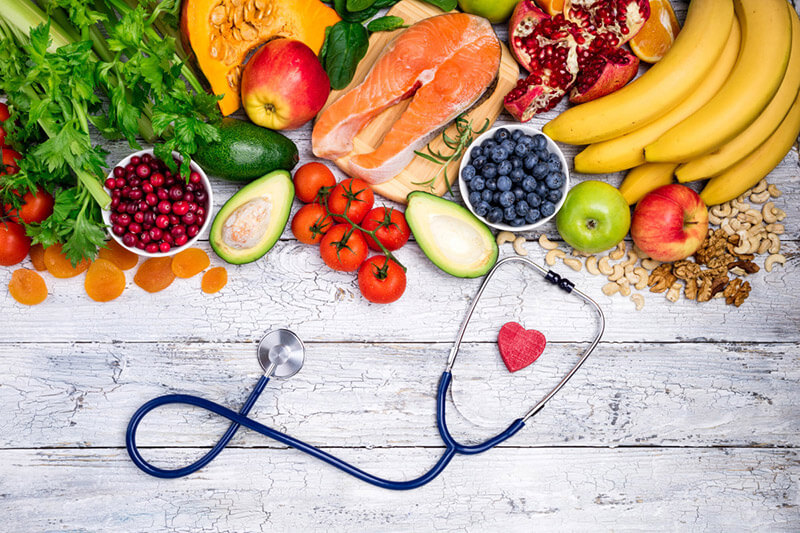Residues and Contaminants present in the food chain can stem from a range of sources, including residues of agrochemicals (e.g., residues of pesticides and veterinary drugs), contamination from environmental sources, cross-contamination or formation during food processing, presence of mycotoxins, and so on.
When consumed by customers, those residues or contaminants can be harmful and will seriously affect human health. They can even cause reproductive and developmental problems, damage the immune system, interfere with hormones, and also cause cancer. Aside from health issues, food contamination can also have economic impacts which might adversely affect international trade. Therefore, to ensure the health safety of consumers, it is necessary to detect and evaluate residues and contaminants in food products.

Lifeasible is a leading company with well-established residues and contaminants testing laboratories. We provide effective testing solutions to help your business identify harmful chemical residues and contaminants in your food products, aiming for minimizing the risk of health impacts. Our residues and contaminants analysis services allow detection of trace residue levels using innovative and in-depth techniques. These techniques include liquid or gas chromatography coupled tandem mass spectrometry (LC-MS/MS or GC-MS/MS) or post-column derivatization followed by UV/Vis detector, inductively coupled plasma tandem mass spectrometry (ICP-MS), capillary electromigration, enzyme-linked immunosorbent assay (ELISA), and other modern technologies.
Our team of experienced scientists will work closely with you to find tailored solutions for the identification of the s17025pecific residues and contaminants, which include, but not limited to:
Pesticides and other agrochemicals are used to increase crop yields and quality by controlling various pests, diseases, and weeds. However, harmful pesticides can accumulate in food products when overused, and will be a threat for human health. Lifeasible provides reliable analysis for a variety of agrochemicals, including pesticides, fungicides, herbicides, plant growth regulators, acaricides, antimicrobials, rodenticides, molluscicides, nematicides, and others.
Veterinary Drug Residues Testing
Veterinary drugs are used to control animal diseases, improve production, or for tranquilization purposes. The levels of veterinary drug residues in animal-derived foods should be strictly regulated to protect human health. The major classes of veterinary drugs we can test include antibiotics, anthelmintics, antiparasitics, nonsteroidal anti-inflammatory drugs (NSAIDs), hormones and hormone analogues, sedatives, stilbenes, and so on.
Disinfection By-products Testing
Reactions between the disinfectant and naturally occurring organic matters in drinking water can lead to accumulation of disinfection by-products (DBPs). The DBPs can be toxic for human, and they are potentially carcinogenic, even at trace concentrations. Therefore, it is essential to control the level of DBPs in food products. Lifeasible provides a number of reliable testing assays for DBPs, including halogenated compounds (e.g., trihalomethanes (THMs), haloacetic acids (HAAs), and others), inorganic oxyhalides (e.g., bromate, chlorite, and chlorate), perchlorate, and so on.
Mycotoxins refer to secondary metabolites produced by fungi or molds. Some types of mycotoxins can be toxic or carcinogenic for humans and animals. We provide highly sensitive mycotoxins testing services, which allow accurate detection of various types of mycotoxins, including aflatoxin, ochratoxin, citrinin, deoxynivalenol (DON), fumonisin, patulin, sterigmatocystin, T-2 / HT-2 toxins, zearalenone, etc..
Organic contaminants can enter the food chain via contacting with contaminations from the environment, cross-contamination, or introduced during food production or packaging processes. These organic contaminants can have adverse health effects on immune and nervous systems, and can even cause cancer. Commonly seen organic contaminants include 3-monochloropropane-1,2-diol (3-MCPD), dioxins, polycyclic aromatic hydrocarbons (PAHs), brominated flame retardants (BFRs), polychlorinated biphenyls (PCBs), mineral oil hydrocarbons, and several more. Our proficient testing laboratories can ensure the competent analysis and routine monitoring of the organic contaminants.
At Lifeasible, our global network of food scientists and laboratories will help you develop tailored solutions for the analysis of residues and contaminants in food products. Our customer-centered, highly efficient services will guarantee the quality of your results and save you time and money. If you would like further information please contact us and we will be more than happy to help you.